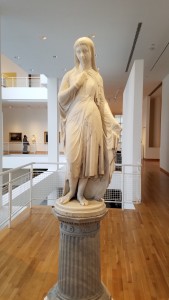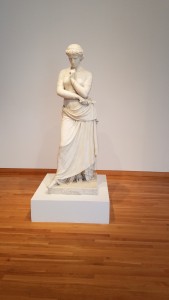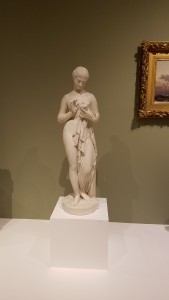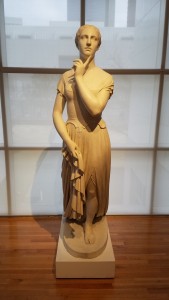I’m currently wrapping up a commission from the Fine Arts Association for a concert their faculty will be presenting next month. The second half of the program will be Camille Saint-Saens’ Carnival of the Animals, so the instrumentation of my piece is the same: flute, clarinet, percussionist, two pianos, and string quintet. The resulting piece is about nine minutes long, and has turned into a tone-poem called Gamer Troll Loses Control.
This piece is my heftiest composition since the start of COVID, when I deliberately backed away from composing to focus on other things that needed to be done. Teaching almost completely online meant I had more computer time in my life than I needed, and I was loath to add to that. Additionally, I made the decision to forego my early-morning composing routine and add an extra opportunity for sleep to help keep my immune system in good condition in the event of illness. So, since March 2020, I’ve written a short piano piece, Power Play, two arrangements for small orchestra of Florence Price’s Adoration, a short piece, Mind, Body, and Soul for the Ekklesia Reed Quintet, and a bass clarinet duo, Child’s Play, for Just This. I put two long-awaited projects on hold: Thomas Lempner and I have been discussing a Carmen Fantasy for baritone saxophone, but other than listening through the opera and some score study, I haven’t got started on it yet, and of course, the symphony, which was stalled before COVID hit, and while I’ve listened through the Sibelius playback a couple of times, I haven’t done any work on it.
But I think about composing a lot. I’ve been studying Tchaikovsky’s The Seasons at the piano, and thinking more and more about a “yearlong” cycle of pieces about Lake Erie. Going to the bluffs here in Willowick has become one of my regular activities, and this project may be in the future. I’m also planning to write a new piece for concert band for the Lakeland Civic Band in memory of their founding director Charles Frank, to be premiered on a memorial concert for him. And, I’m starting to want to write a second piano sonata–partly inspired by Richard Danielpour’s American Mosaic for Simone Dinnerstein. I’m still not ready to write my COVID piece–which isn’t surprising. My experience of the pandemic has been of routine, and waiting, not of personally momentous events, and for that I’m thankful. I’m not saying I need to be personally impacted by the virus before I can write about it–but I’m not interested in writing for the sake of writing about it, which would feel forced and inauthentic. It may be some time, and I may never write a COVID piece.
So, in late Spring, Michael Lund Ziegler, director of education at the Fine Arts Association (FAA), called to ask if I would contribute to the first in their series of concerts for 2021-2022, and I agreed (I will appear on my own recital this winter, performing Twenty Views of the Trombone). We quickly finalized the instrumentation, which will mostly be provided by the FAA faculty, with Michael conducting. I suggested that we base the piece in some form on student work–this would bring together the music and visual arts sides of the FAA, and highlight the students, who are the reason that the FAA exists in the first place. We brought Melissa Sextella into the conversation. It was, fortuitously, near the end of the term, and several of her classes had final projects that could be helpful in generating some possible characters. She sent me four wonderful images, and I started thinking about what a piece about these characters might look like, and I contacted several of the artists to pick their brains. The kids were very helpful–down to the five-year-old creator of “Greenie Meanie,” a grumpy octopus on the lookout for walleye.
Then I went on vacation. We spent a week in Charleston, South Carolina, and I brought manuscript paper, but didn’t touch it. I did make a note in my travel journal that I was leaning toward a single-movement structure rather than a suite of pieces: and that has worked out. The result is more Till Eulenspiegel than Pictures at an Exhibition. I also decided to make references to Carnival of the Animals, since the two pieces will be paired at the premiere, and having the same forces, may be performed together down the road (in fact, I already have some interest in just that).
Upon returning home, I decided to start by writing a story. I decided on a fairy tale: Gamer Troll wakes up one morning and can’t find his video game controller. There are echoes of Band Camp 1993 in this inciting incident, for anyone who is reading this who happened to be there, although the ending is completely different. Being fairly stupid, as trolls are, Gamer Troll trudges to the beach, meeting some wacky surreal birds, is swept out to sea where he is almost eaten, saved by a mermaid princess, and sent back to the beach. He trudges back home to his parents’ cave, where he flops down on the couch to discover that his controller was in his pocket the whole time. The moral, in troll-like fashion, is, “It’s always the last place you look, because when you find it, you stop looking.”
Read the whole story here. I have to say I think it came out pretty well, and I read it to Melia, age seven, as a bedtime story, and it proved satisfactory for that purpose. Maybe I have a career as a children’s author?
Finally, it was time to write the music. My story was too in-depth to depict every nuance in music, at least not in nine minutes, but the highlights are there. I’ve never written a true tone-poem like this that attempted to adhere closely to a narrative and express it to the extent possible, but I started with a few sketches of motives (Gamer Troll saying “No controller, no games,” a combination of Saint-Saens’ chickens and cuckoo for the wacky birds). Conveniently, lots of rippling water and bubble music, and my two giant waves are in homage to John Luther Adams’ Become Ocean. The percussionist will add to Saint-Saens xylophone and glass harmonica (I assume that will be glockenspiel) with a snare drum and suspended cymbal. I didn’t study the Saint-Saens in great depth, and my piece is much more of an ensemble piece, where Carnival is more a piano duo with some obbligato parts. My pianist colleagues will have their hands full with Saint-Saens anyway, so they don’t need a second virtuoso piece. It was tempting to consistently have one instrument play each character, but I didn’t want to limit the roles: while Gamer Troll is featured continuously, the other characters are not, and the ensemble is too small to reserve one or more instruments for short sections.
I’m currently wrapping up layout and part extraction, and I’m looking forward to rehearsals and the premiere in the third week of August. Here is information on that (you have to scroll down past all the theater productions).




